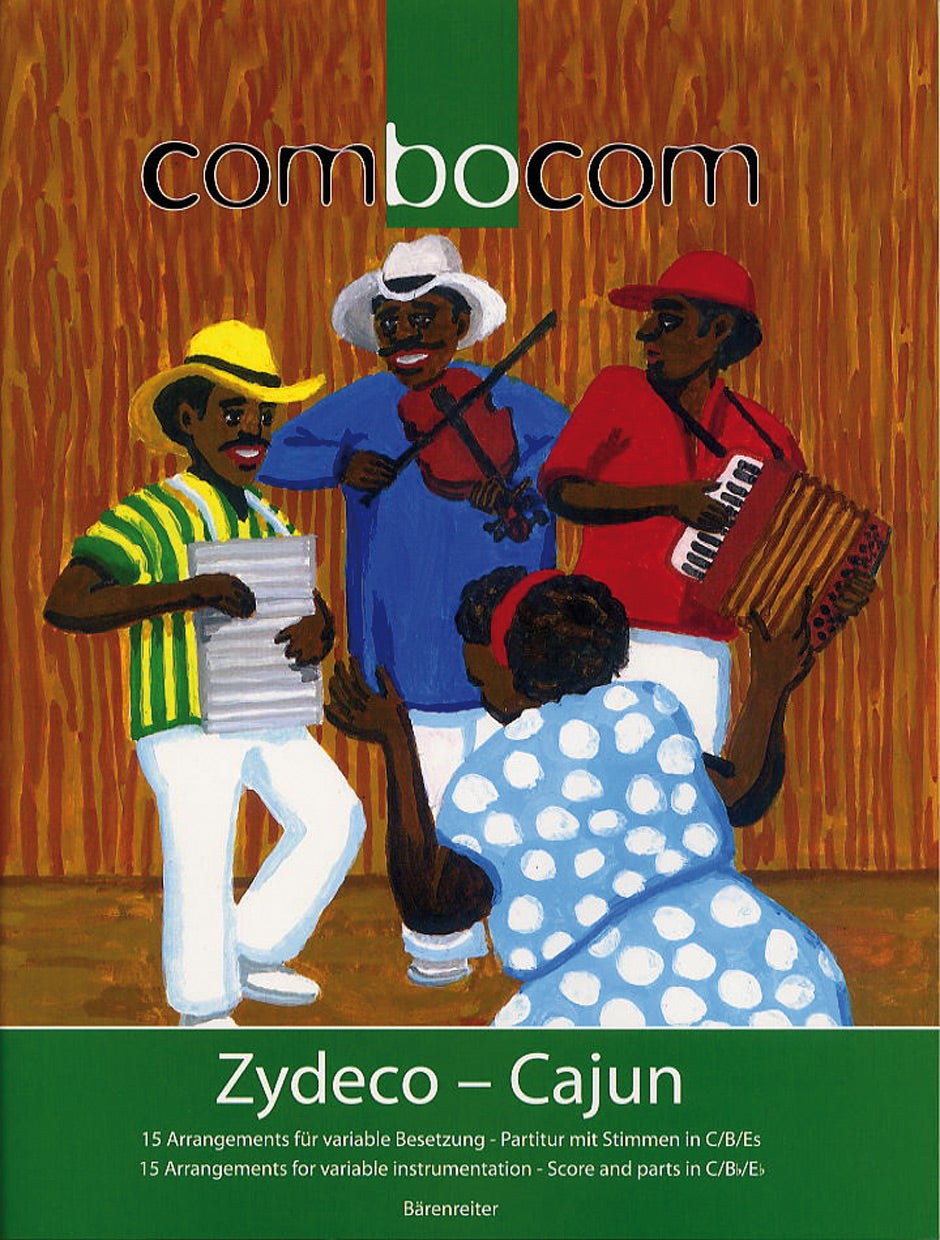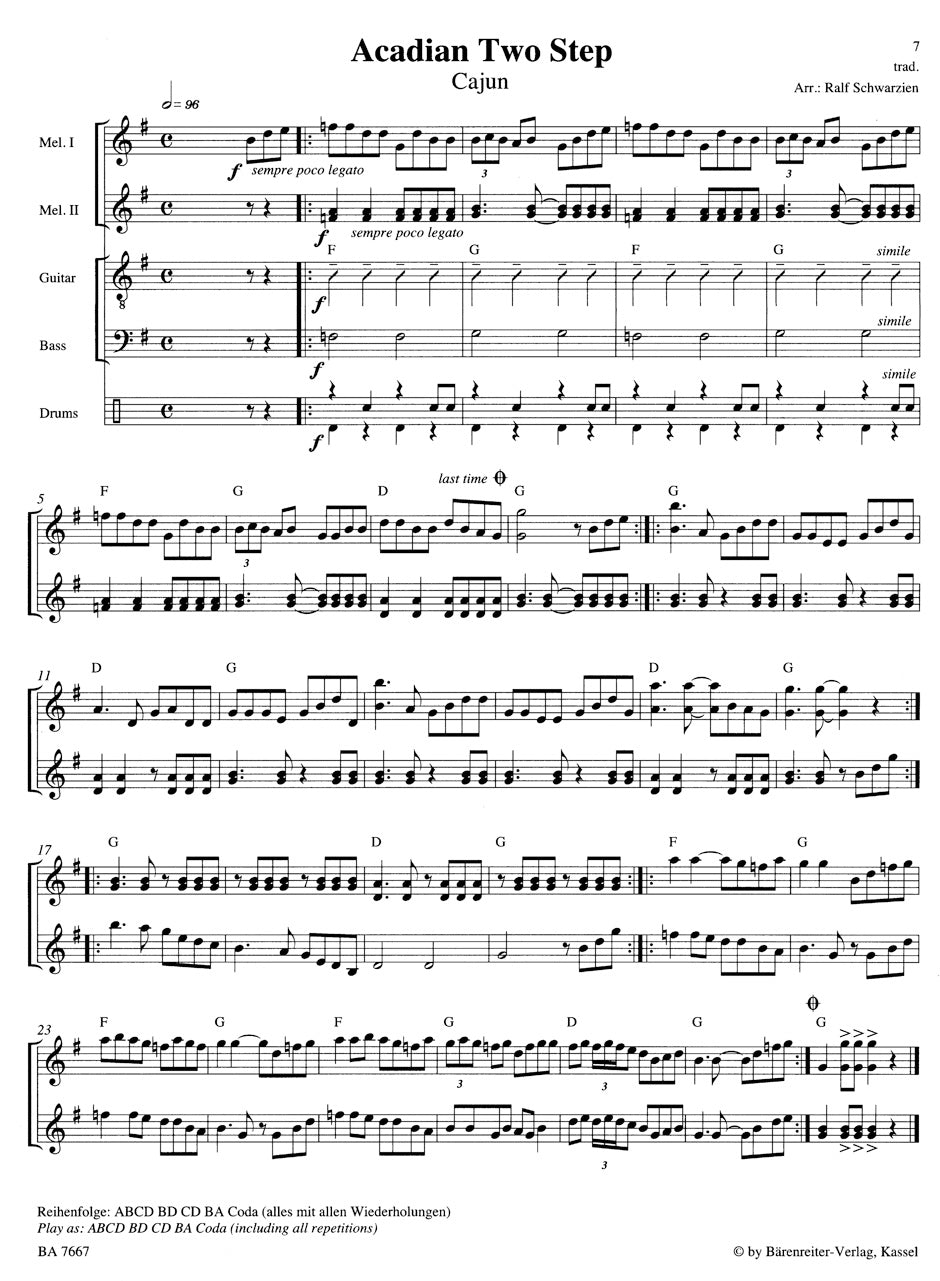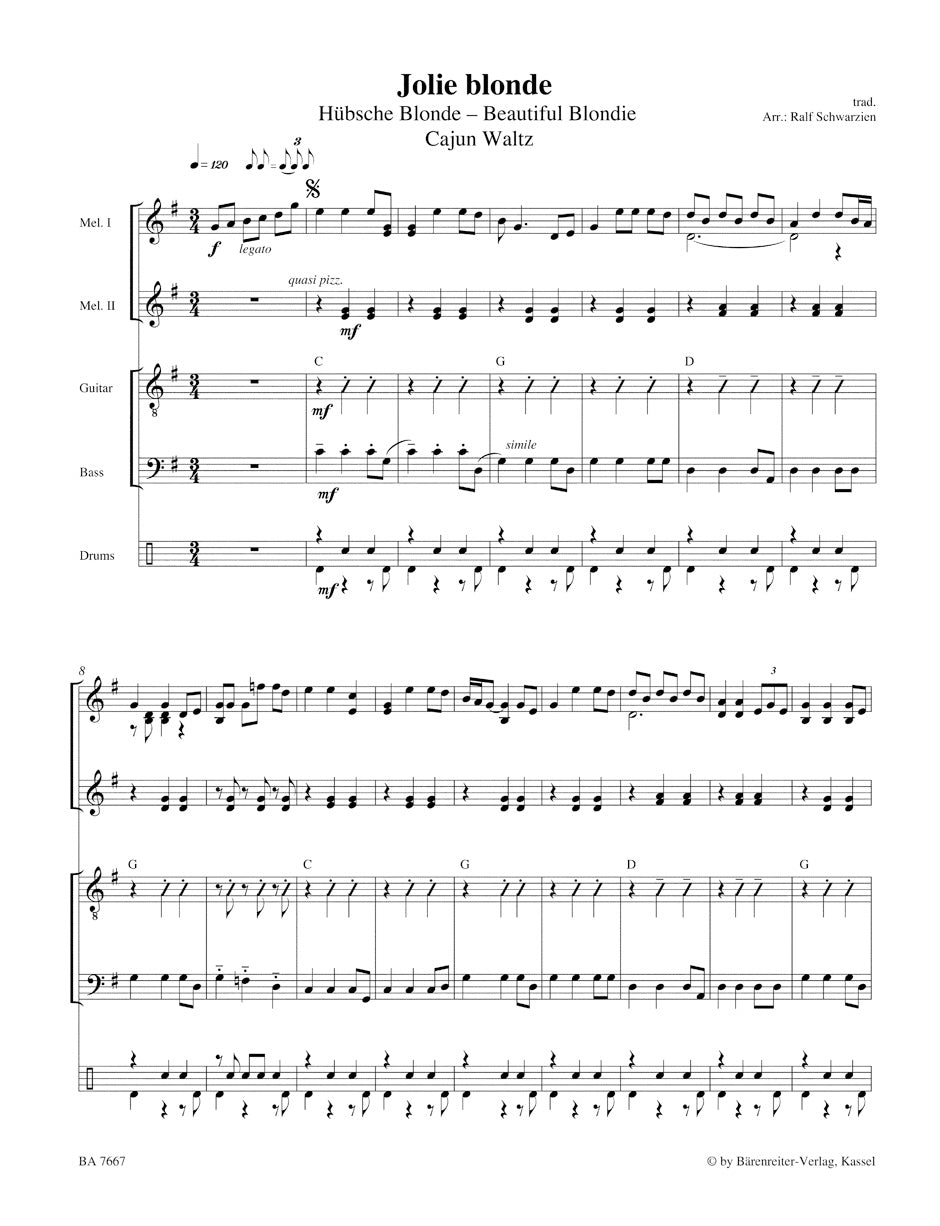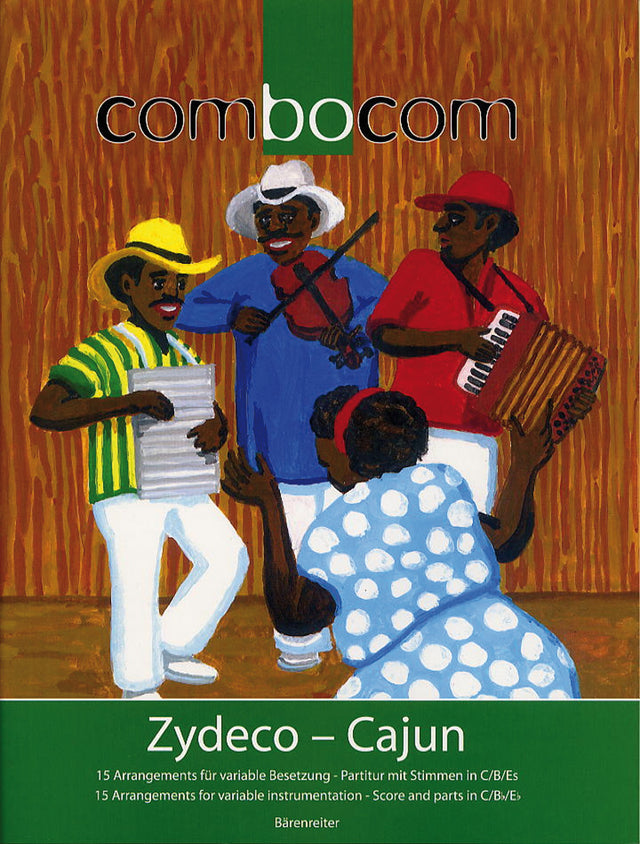Zydeco - Cajun
15 Arrangements for Variable Instrumentation
In stock and typically ships within 1 business day.
- Arranger: Ralf Schwarzien
- Format: Score & Set of Parts
- Instrumentation: Voice, Double Bass, Accordion, Percussion, Melodic Instrument
- Work Language: English
- ISMN:
- Size: 9.1 x 11.8 inches
- Pages: 94
Description
A style of dance music, usually called zydeco but also sometimes known as cajun, arose in the state of Louisiana approximately a hundred years ago. It reached its heyday in New Orleans during the Fifties and Sixties. The first term is frequently assigned to America 's black population, the second to the whites. French and German emigrés brought accordions, washboards and violins to the Mississippi , mingling their music with African elements, echoes of the blues, and snippets from other immigrant cultures. The accordion had the advantage that it could stand out in noisy bars and carry the bass, melody, and rhythm. It became the leading instrument in this music. To the present day zydeco brings people together for uninhibited cross-generational music-making, listening, dancing, eating, and drinking. The 15 songs and instrumentals have been arranged for accordion, violin, guitar, bass and a vocal part where appropriate. Mostly, fully written-out percussion accompaniments are included.
- Zydeco and Cajun - Variable instrumental combinations - Many alternative versions possible - Simple to play, easy listening The editor Ralf Schwarzien is a composer and arranger of many accordion editions not only in the field of zydeco and cajun. He is also a conductor, sought after speaker as well as teacher at the German "Harmonikaverband"
Contents:
- Acadian 2 Steo
- Les filles du Canada
- Lacassine Special
- Jolie blonde
- Perodin 2 Step
- Crowley 2 Step
- Petits yeux noirs
- Chère ici, chère là-bas
- Don't mess with My Toot-toot
- Don't Cry No More
- Zydeco Boogaloo
- Fais do-do
- Lucille
- Cryin' Squeezebox
- Les marins de la Nouvelle
- France
Publishers use a lot of words to describe what they sell, and we know it can be confusing. We've tried to be as clear as possible to make sure you get exactly what you are looking for. Below are descriptions of the terms that we use to describe the various formats that music often comes in.
Choral Score
A score for vocalists that only contains the vocal lines. The instrumental parts are not there for reference. Generally, cheaper than a vocal score and requires multiple copies for purchase.
Facsimile
Reproductions of the original hand-written scores from the composer.
Full Score
For ensemble music, this indicates that the edition contains all parts on a single system (there are not separate parts for each player). In larger ensembles, this is for the conductor.
Hardcover
Hardbound. Generally either linen-covered or half-leather.
Orchestral Parts
Similar to a wind set, this is a collection of parts. In the case of strings, the numbers listed are the number of copies included, though generally these are available individually (often with minimum quantities required).
Paperback
When publishers offer multiple bindings (e.g. hardcover) or study scores, this is the "standard" version. If you're planning to play the music, this is probably what you want.
Performance / Playing Score
A score of the music containing all parts on one system, intended for players to share. There are not separate parts for each player.
Set of Parts
For ensemble music, this indicates that there are separate individual parts for each player.
Solo Part with Piano Reduction
For solo pieces with orchestra, this is a version that contains a piano reduction of the orchestra parts. For piano pieces, two copies are typically needed for performance.
Study Score
A small (think choral size) copy of the complete score meant for studying, and not playing. They make great add-ons when learning concertos and small chamber works.
Vocal Score
A score prepared for vocalists that includes the piano/organ part or a reduction of the instrumental parts.
Wind Set
For orchestral music, this is a collection of wind and percussion parts. The specific quantities of each instrument are notated.
With Audio
In addition to the printed music, the edition contains recordings of the pieces. This may be an included CD, or access to files on the internet.
With / Without Fingering (Markings)
Some publishers prepare two copies - a pure Urtext edition that includes no fingering (or bowing) suggestions and a lightly edited version that includes a minimal number of editorial markings.





